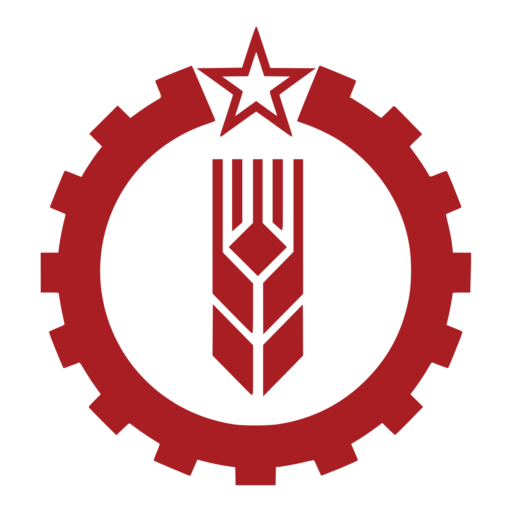Introduction
Who does Victor Navalny represent? Certainly he has admirable courage and is determined to challenge the oligarchy of Putin and its power. But a clear view of his links to Western capitalism show that he is no hero of the working classes of Russia. In reality the current battle pits the Putin class of ‘Siloviki’ (the so-called ‘strong-men’) newly minted oligarchs against Navalny, who is a flag bearer of Western capitalism. Sad to say, there are no simple heroes here. However Navalny has roused a large portion of people to see through Putinism. That movement should be supported by socialists. To understand the current events, we must review how we got here.
The creation of a Russian oligarchy from the corpse of the Soviet socialist enterprises
Ever since the 1917 Bolshevik socialist revolution in Russia, those wanting a capitalist ‘reform’ repeatedly tried to turn the clock back. The adoption of a market economy within the USSR was first espoused by Nikolay Akekaeyevich Voznesensky in 1947 in a book that anticipated the ‘reforms’ of Nikita Khrushchev:
“His (Voznesensky‘s — Ed.) economic theories…anticipated by a decade the actual changes in the structure of the Soviet economy that were introduced during 1957-60“. [1]
The changes that Vosnosensky called for took place under the new leadership of the state formed by Khrushchev. It did away with any semblance of a planned economy:
“From 1955… revisionist economists like Evsei Liberman were writing in Soviet economic journals of the ‘necessity’ of freeing the economy from ‘excessive’ centralised direction and giving greater freedom to the directors of enterprises to decide what and how much the enterprises in their charge should produce:
“These shortcomings in economic management should be eliminated… by developing the economic initiative and independence of enterprises”.[2]
The purpose was to institute as a regulator of production – profit:
“Production will be subordinated to changes in profits”.[3]
Yet if under Khrushchev, the profit motive was resurrected in the former USSR, it still took time to undermine the support of people to the USSR state. The final dismantling of the former socialist state occurred under President Gorbachev. Gorbachev oversaw the on-going steady erosion of central controls and allowed state-owned enterprises to regulate themselves. Living conditions deteriorated for the people. Still, Boris Yeltsin and others leaders wanted faster changes to an un-mitigated open capitalism. Gorbachev was basically elbowed to one side, and resigned as Soviet President saying “My life’s work has been accomplished’.[4] As Roy Medvedev says:
“The new rulers of the Russian Federation introduced a political program that mounted to a ‘revolution from above’, whose aim was to transform the so-called socialist system of former Soviet Russia into a liberal capitalist system. President Boris Yeltsin … carried out extensive measures to eliminate state owned industry and privatize the entire economic infra-structure”. [5]
Yeltsin already behind Gorbachev’s back, had already engineered the formal liquidation of the USSR into the so-called new ‘Commonwealth of Independent States’, which he signed into effect in the Belavezha Accord of 1991. Now the final bars to a profit-making society were removed as Boris Yeltsin ushered in key changes. As the ‘Independent’ reported in 1982:
“The removal of price control and subsidies decreed by the Russian President, Boris Yeltsin, is intended to accelerate the transition to a market economy…The price reform abolishes all state controls on many consumer goods and services… Millions of Russians will be condemned to unknown poverty overnight There is little hope that catastrophe can be avoided “. [6]
Together with his Prime Minister Yegor Gaidar, Yeltsin sold off the state. All citizens were to receive an anonymous voucher for “an equal share” of the country’s industrial enterprises. This was supposed to total ten thousand roubles – said the new President. [7] but under a rapid inflation that set in, that value fell dramatically. In any case people were not being paid. These vouchers ended up being sold for survival. As the major of Moscow Yuri Luzhov put it:
“Privatisation was like a drunkard in the street selling his belongings for a pittance”.
In swooped those with even a little cash and bought up the vouchers to possess the former enterprises. Yeltsin and Gaidar were guided by an influx of USA and Western ‘economists’ such as Jeffrey Sachs. [8] This is how the oligarchy in Russia was created. It was to be exemplified by the oil and gas magnate Mikhail Khodorovsky (1963-) whose power was to be broken by Putin.
Read the entire article as a PDF via this link.
[1] Bruce J. McFarlane: ‘The Soviet Rehabilitation of N. A. Voznesensy –Economist and Planner’, in: ‘Australian Outlook’, Volume 18, No. 2 (August 1964); p. 151; cited by Bland https://ml-review.ca/aml/AllianceIssues/VosnosenskyFINAL.html; and W. B. Bland, ‘The Restoration Of Capitalism In The Soviet Union’; Wembley UK, 1980; at: http://www.oneparty.co.uk/html/book/ussrindex.html; and http://www.oneparty.co.uk/html/book/ussrleningrad.html
[2] W.B.Bland for the Communist League (UK); Compass No.92. November 1991 “An open letter to the “New Communist Party”; citing E. G. Liberman: ‘Cost Accounting and Material Encouragement of Industrial Personnel’, in: ‘Voprosy Ekonomiki’, No. 6, 1955.
[3] G. Kosiachenko: ‘Important Conditions for the Improvement of Planning’, in: ‘Voprosy Ekonomiki’, No. 11, 1962; In Bland Ibid.
[4] Cited in ‘Times’, (London); 9 December 1991; p. 1
[5] Roy Medvedev, “Post-Soviet Russia. A Journey through the Yeltsin era”; New York; 2000; p.4.
[6] ‘Independent’, 2 January 1992; p. 1; 8
[7] Medvedev Ibid p. 89; 90;
[8] Catherine Belton, ‘Putin’s People’; New York; 2020; p.76

